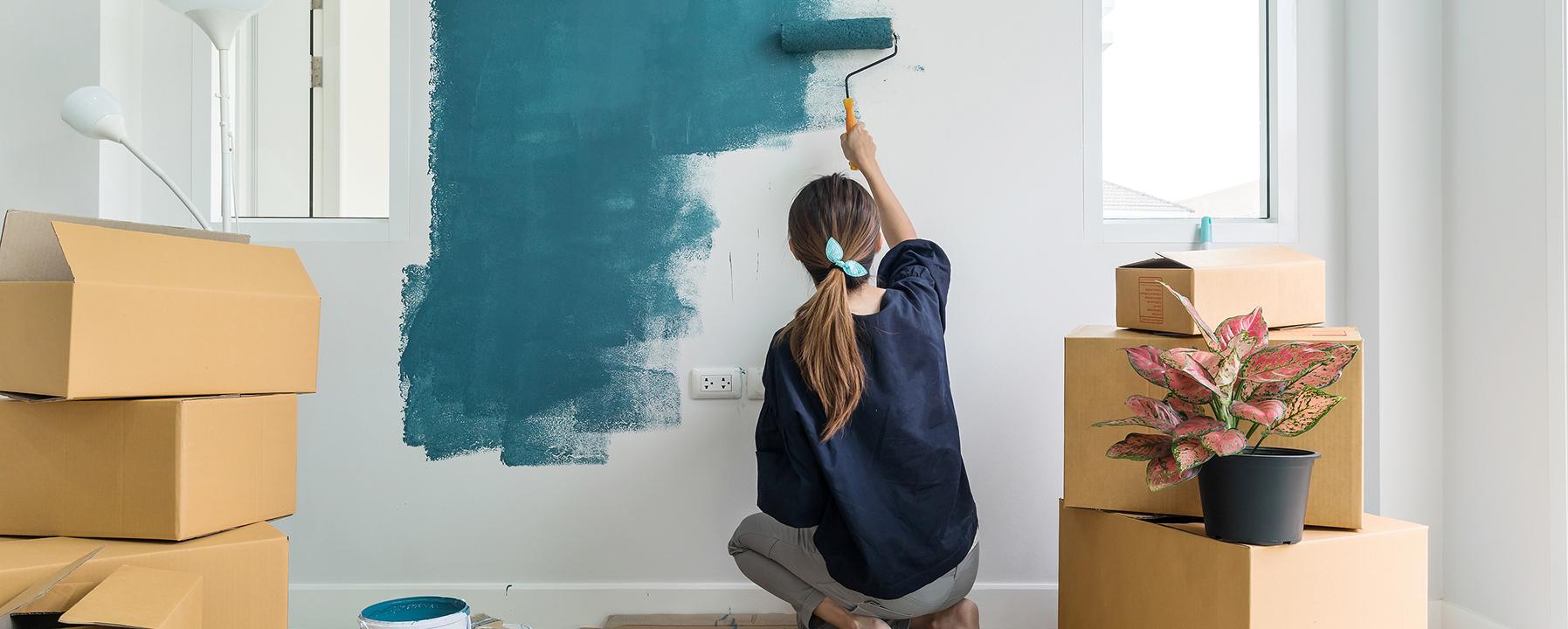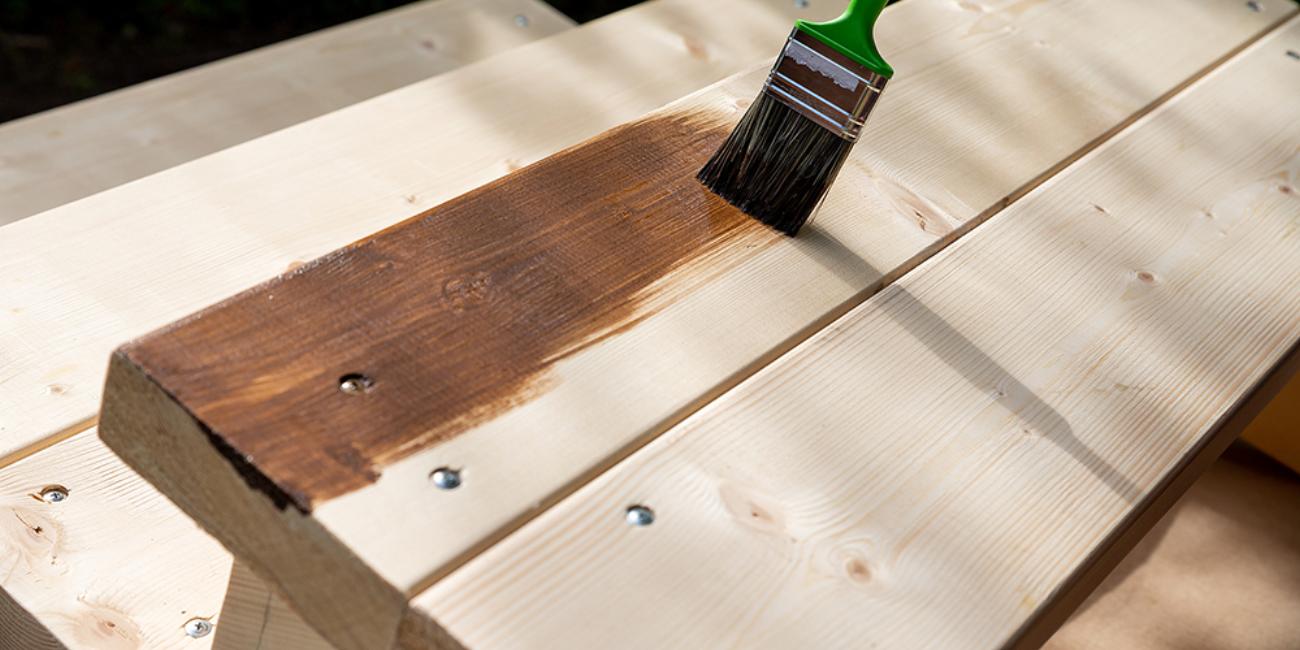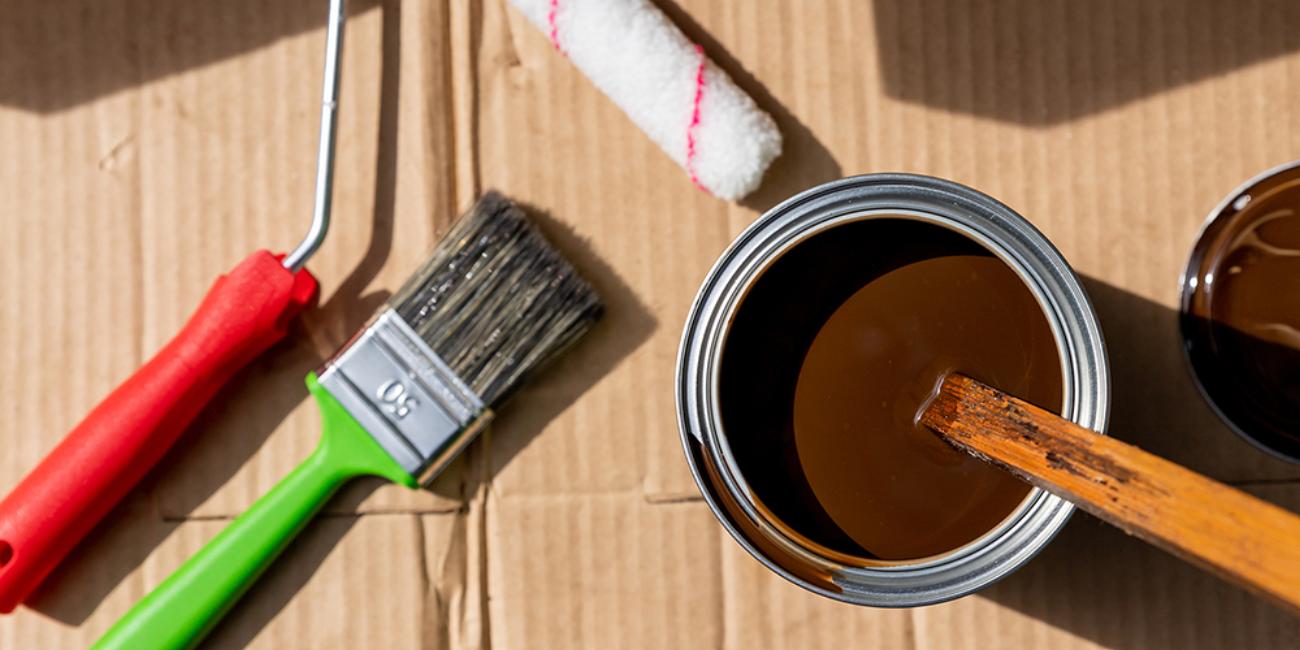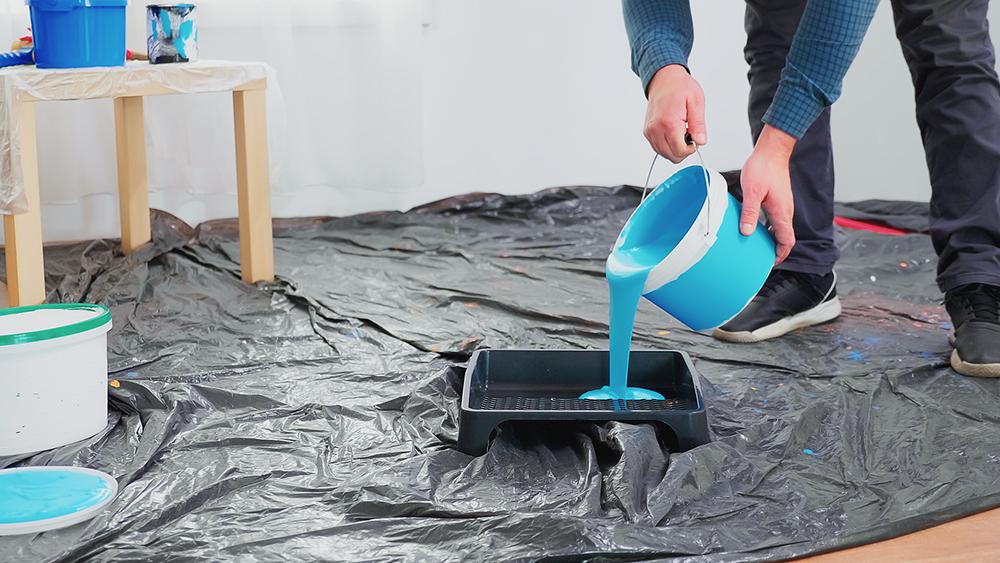
Your guide to painting the house!
Easter is just around the corner, the weather is getting warmer and a house refurbishment is a must! Apart from necessary for maintenance purposes, painting is an opportunity to refresh the ambiance in your home and elevate your mood. And if you decide to follow the… DIY way (whenever possible of course), you can involve friends and family and turn the whole project into a pleasant and productive, bonding experience!
Wondering where to begin? That’s what we are here for!

What kind of paint will you need?
A different type of paint is required for each space and material. What do we mean by that? There are paints for interior walls and surfaces, and paints for exterior walls and surfaces, which are specially made to withstand rain, sun light and other conditions. This is a key segmentation for you and your house painting project.
Apart from the above, keep in mind that you will need different types of paint for different types of surfaces – walls, metal surfaces, tiles and so on. Especially if you’re planning to paint wooden surfaces, you will need to consider varnishes, wood paints and, of course, wood preservatives.
If you dig into it a bit more, you will find out that there are also paints that are more suitable than others for specific rooms. For example, if you want to paint your kitchen, or your bathroom, you should consider paints that are made specifically for these rooms and have features such as washability, antimould properties etc.

Do I need a primer apart from paint?
Primers play an important role in achieving and maintaining a good result when it comes to painting. A primer is a preparatory base coat for the surface to be painted, that increases the coverage and enhances the durability of the paint, while also protecting the surface and the colour from various “threats”, such as mould, rust, stains etc.
As with paints, a different type of primer is required for each type of surface. So, you will notice that various types of primers are available in stores, such as wall, wood, metal and universal primers. You will also notice that depending on the type of paint – water-based or solvent-based – you need to use the corresponding type of primer.
When don’t you need a primer? You don’t need a primer in cases where you will add an extra layer of colour on surfaces that are already painted and in good condition.

Which tools do you need to get to work?
The essential ones are those that pop into your mind first: Paint rollers, brushes, trays and a ladder for the higher parts! But don’t forget the paint handles for your rollers, the covering sheets for your furniture and the masking tape for your skirting boards, electrical sockets and other little details. If you want to dig into it a bit more, you can view more tools here!
A few tips that will save you the trouble:
- Clean your surface well, with a dry cloth, before you start painting.
- Paint in W-shaped strokes with your roller, rather than up and down. This way, you will have an even finish, with no roller stripes.
- Remember to close the lids well before you store your paint tins.
- To prevent your brushes and rollers from drying out when you’re not using them, place them in a bucket and cover them with a damp cloth.

